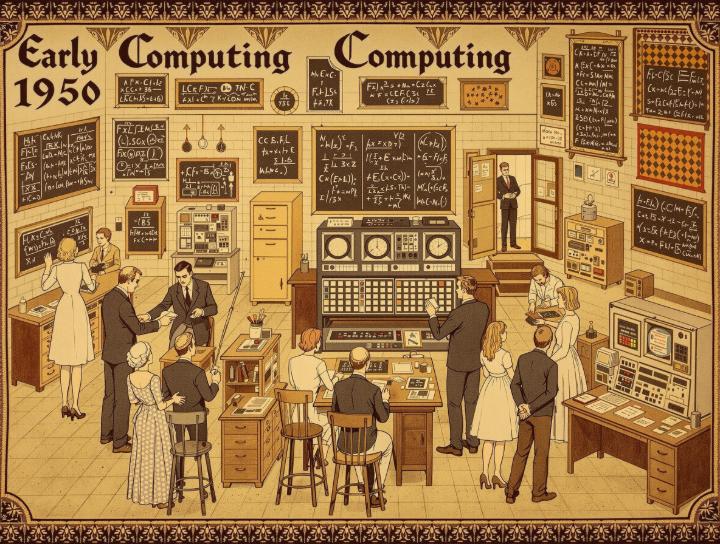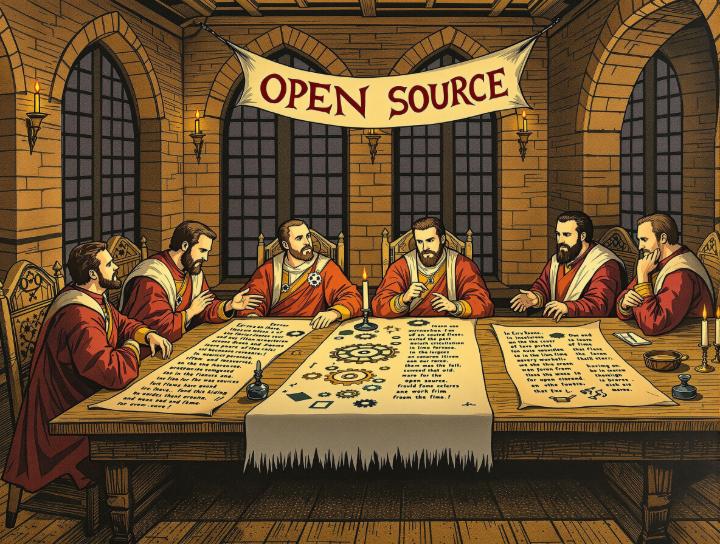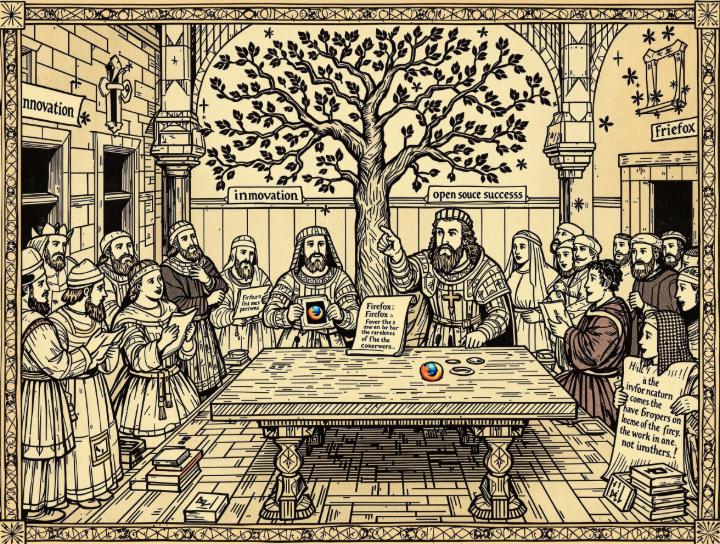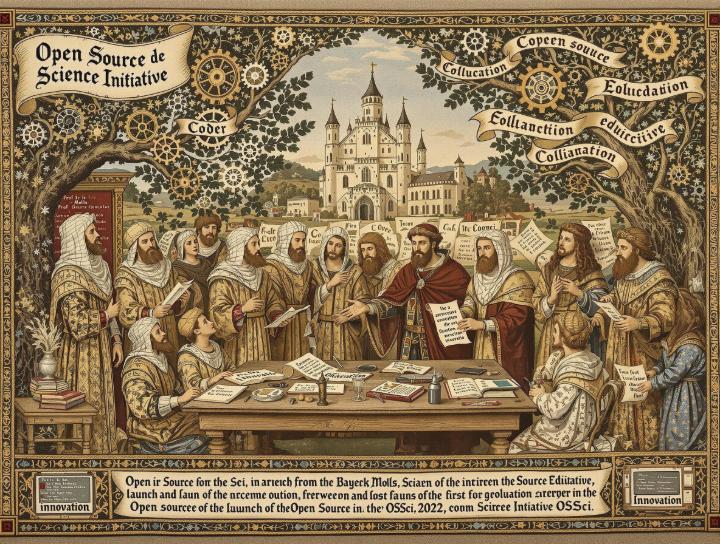Introduction
The open source movement has fundamentally transformed the software industry by promoting collaboration, transparency, and freedom in software development. From its early roots in academic and hacker culture to the creation of foundational projects and organizations, open source has reshaped how software is built, shared, and commercialized. This blogpost presents a detailed timeline of the open source movement from its inception to the conception of the Open Source Science (OS-SCi) in 2022, highlighting key milestones, pivotal figures, and major projects that have defined this transformative journey.
Detailed Open Source Timeline
| Year | Event Description | Key Figures Involved | Significant Projects/Technologies Introduced |
|---|---|---|---|
| 1950s | Early computing era: Software freely shared among academics and researchers; SHARE users group founded (1955). | MIT researchers, SHARE members | Early mainframe software, collaborative computing culture |
| 1960s | Hacker culture emerges at MIT, centered around the Tech Model Railroad Club and MIT AI Lab. | William Eccles, Jack Dennis, Marvin Minsky | PDP-1 minicomputer, early AI and computing experiments |
| 1970s | Transition from open software sharing to proprietary software models; CONTU decision (1974). | Legal and industry figures | Proprietary software licensing begins |
| 1983 | Richard Stallman launches the GNU Project to create a free operating system. | Richard Stallman | GNU Project, Free Software Movement begins |
| 1985 | Free Software Foundation (FSF) founded to promote free software and enforce the GNU GPL. | Richard Stallman | GNU General Public License (GPL), GNU Manifesto |
| 1991 | Linus Torvalds creates the Linux kernel, a pivotal open source operating system. | Linus Torvalds | Linux kernel |
| 1995 | Apache HTTP Server released, becoming the dominant web server software. | Apache Group (later ASF) | Apache HTTP Server |
| 1998 | Term "open source" coined; Open Source Initiative (OSI) founded; Netscape open sources its browser. | Eric Raymond, Bruce Perens, Linus Torvalds | Mozilla project, Open Source Definition |
| 1999 | Apache Software Foundation (ASF) incorporated; Red Hat and VA Linux IPOs mark commercialization. | ASF founders, Red Hat, VA Linux | ASF formed, Linux commercialization |
| 2004 | Mozilla Firefox released as a free and open source web browser. | Mozilla Foundation | Mozilla Firefox |
| 2022 | Open Source Science Initiative (OSSci) launched by Prof. Ir. Erik Mols, focusing on training the next generation of FOSS engineers using open source technologies and philosophy in a project learning environment. | Prof. Ir. Erik Mols | OSSci initiative for scientific discovery |
Narrative Overview

Early Foundations and Hacker Culture (1950s–1970s)
The open source movement’s roots lie in the 1950s when software was freely exchanged among researchers and academics. Institutions like MIT fostered a culture of openness and experimentation, with groups such as the Tech Model Railroad Club pioneering the hacker ethos. The PDP-1 minicomputer at MIT in 1961 became a focal point for early hackers who explored computing’s potential through playful innovation. This culture valued sharing, modification, and collaborative improvement of software, setting the stage for the open source philosophy1.
The Rise of Proprietary Software and the Free Software Movement (1980s)
The late 1970s and early 1980s saw a shift toward proprietary software as legal decisions granted software copyright protection, enabling commercial licensing models. In response, Richard Stallman launched the GNU Project in 1983 to create a free operating system and founded the Free Software Foundation in 1985. The GNU Manifesto articulated the moral and practical imperatives of software freedom, advocating for users’ rights to study, modify, and distribute software. This period marked the formalization of the free software movement, which laid the ideological and legal groundwork for open source1.

The Birth and Growth of Open Source (1990s)
The term “open source” was popularized in 1998 at a summit organized by Tim O’Reilly and supported by key figures including Linus Torvalds. The Open Source Initiative (OSI) was founded to promote open source software pragmatically, focusing on licensing and community collaboration. This decade also saw the rise of major open source projects such as the Linux kernel (1991), the Apache HTTP Server (1995), and the Mozilla browser (1998). These projects demonstrated the viability of open source as a development model and began to challenge proprietary software’s dominance1.
Professionalization and Commercialization (Late 1990s–2000s)
The late 1990s and early 2000s marked the professionalization of open source with the IPOs of companies like Red Hat and VA Linux, which commercialized Linux distributions. The Apache Software Foundation (ASF) was incorporated in 1999 to support the growing ecosystem of open source projects. Mozilla Firefox’s release in 2004 further expanded open source’s reach into web browsing, emphasizing privacy and security. These developments showcased open source’s economic potential and its ability to support sustainable business models1.
Open Source in Science and Education (2022)
In 2022, Open Source Science (OS-SCi) was launched by Prof. Ir. Erik Mols, focusing on training the next generation of FOSS engineers using open source technologies and philosophy in a project learning environment. OS-SCi focuses on connecting open source industry, students and developers to enhance existing open source tools and create new ones. This initiative underscores the growing recognition of open source’s role in advancing opoen source computer technology, fostering collaboration across academia, industry, and government.
Conclusion
The open source movement has evolved from a culture of academic sharing and hacker innovation into a global phenomenon that underpins modern computing and scientific discovery. Key milestones such as the GNU Project, Linux, Apache, and Mozilla have revolutionized the software industry, demonstrating the power of collaborative development and open licensing. Organizations like the FSF, OSI, and ASF have provided governance and advocacy, ensuring open source’s sustainability and growth. The conception of OS-SCi in 2022 highlights open source’s expanding role into education, promising to accelerate discovery through community-driven innovation, with software development. This timeline encapsulates the movement’s transformative journey, emphasizing its enduring impact on technology, industry, and society.


